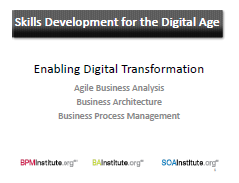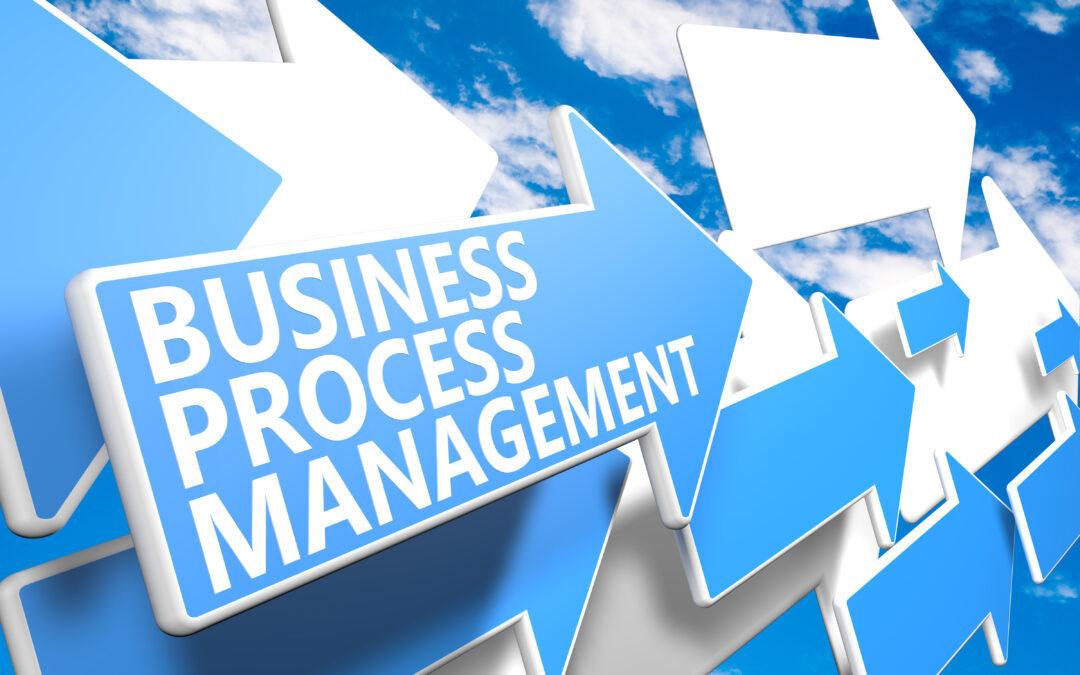Home / Resources
Resources
Discover a Wealth of BPM Knowledge and Expertise at BPMInstitute.org!

The Single Best Measurement of Agile Success
Tell me if this sounds familiar. Organization A decides to adopt Agile methods and begin the lengthy and possibly (probably) expensive transformation process. In doing so they engage in lots of training, read books, attend conferences and listen to webinars. They engage a consulting organization to help coach the change. But, after a period of time has gone by someone brilliantly asks, “So, are we better for having done this?” Great question. Many companies have no idea whether or not these Agile methods are actually helping the bottom line and the way we deliver overall. We figure that if teams are sprinting and doing retrospectives we must be better. If teams are co-located and I see sticky notes on the wall, we must be better.

4 Tips to Maximize Project Walls
Projects create a maelstrom of documentation – charters, workplans, issues logs, process flows, requirements, solution designs, parking lots, and many more. With the deluge, invariably some of the documentation is relegated to the hard drive of death – hidden out of the view of those who might benefit from its availability.

Modeling Standards are Key to Scaling BPM Adoption
OK, you have completed a successful pilot BPM project and your organization is now committed to a major enterprise BPM initiative. There are many steps you need to undertake now, too many for a single article such as this, but in this article we will explore one which is often overlooked. The BPM industry, both tool vendors and consultants, like to talk about how much simpler it is to develop solutions with BPM than with traditional programming tools. While this is certainly true, too many organizations interpret this as license to short-cut the disciplines which they have found to be necessary in all other forms of solution development. This article will discuss the importance of modeling standards, provide guidelines on how to develop appropriate standards and perhaps most important how to make them an integral part of your process.

Four of the Top Reasons for Operational Excellence Failure
Given that operational excellence (Op Ex) was built on a solid foundation of total quality management principles, it’s a bit surprising that as many as two thirds of Op Ex programs fail to meet expectations. While there are many reasons accounting for the failure of enterprise wide Op Ex programs, the following are arguably the top four in my experience.
Lack of Purpose

Career Options for Business Analysts and Project Managers
We live in times where the only constant is change. Efforts to shift to Digital Business and transformations are underway everywhere. It’s no wonder that many of our members, especially analysts and project/portfolio managers, are trying to figure out where they’ll go next in their careers and what types of skills they’ll need to have continued success.
This webcast brings together three preeminent subject matter experts to provide you with insight into three disciplines that we believe have staying power and are potentially a good fit for you and your career.
For each topic, we discuss:

Walking the Business Architecture Talk
One of the questions I’m asked frequently is “how do I launch business architecture in my company?” I know it can be challenging–I have a lot of great responses to this question, and I offer classes specifically on this topic and consulting with organizations to do it. At the same time, I believe that benefits from business architecture techniques and models are already attainable for you regardless of your defined role, position or formality in the business. I always say, once you start thinking and acting like a business architect, regardless of where you sit, things will make sense to you in a new way and you will provide value for the business. I was a few minutes early for a lunch meeting a few weeks ago, so I stopped by a furniture store across the street from the restaurant that had a big sale sign out front. When I stepped into the store, it became clear by the room vignettes (and the prices) that this was an interior design retail showroom.

Decisions and Digital Transformation
As I pondered topics for this quarter’s missive, I decided to browse presentations from some recent conferences that focused on both technology generally, and financial services specifically. The former was full of optimism and excitement over a new day dawning and the power that advances in big data, analytics, and decision management might bring. The latter was replete with complaints over burdensome regulations, an inability to meet customer’s needs, and the desire to modernize extremely outdated legacy platforms. It truly seems that the approaches we discuss regularly here at BPMInstitute.org are not being fully recognized as potential solutions to alleviate the significant pain being felt. But why?

Robotic Process Automation (RPA), BPM and BPMS
There’s a fair amount of excitement around Robotic Process Automation or RPA. Some of it is just hype and some of it has substance. In February of this year, *Forrester forecasted that the size of the RPA market will reach $2.9 billion by 2021 – only to quickly point out that this number pales in comparison to the size of the total Artificial Intelligence (AI) spend estimated at $48.5 billion. Forrester also estimated that there will be over 4 million robots doing office and administrative and sales and related tasks by 2021 and the cost of an RPA robot is currently in the $5,000 to $10,000 range per annum. As a single robot may replace as many as three to five workers – the savings are easy to calculate.** Further, the return on investment (ROI) from RPA has been predicted at a potential of 30–200% —in the first year. ***

Agility in Requirements Gathering
Requirements gathering should be done mindfully. Then there is this world we are living in, which requires agility, right? Well, can mindfulness and agile be imagined together? Once you can imagine this your requirements will be solid and done right, and you will obtain agility. Your sign-offs will be also achieved smoothly. It won’t stop there. Development, unit testing, functional testing and UAT will be smooth as well, including your org readiness efforts, along with your usage uptake and learning experience. Does this sound like it is out of this world, or in Utopia as most of us know this is not a very easy thing to achieve?

The Vigilant Business Architect: Lessons from the Field
2017 may go down as the year of ransomware, rogue software that infects a computer, scrambles the data, demands you pay money to get access back, and eventually destroys your files. In May the WannaCry ransomware cyberattack affected more than 200,000 users in over 150 countries and disrupted operations for numerous corporations. This was followed in June by a new variant of the Petya ransomware, with this cyberattack impacting over 12,000 devices in around 65 countries, along with some high profile corporations. While most ransomware still targets consumers, what is notable for business architects is that according to Kaspersky Lab, ransomware attacks on businesses increased 11x in 2016. So what is the role of a business architect regarding cybersecurity, disaster recovery, and business continuity planning? I honestly have no idea. In the spirit of never letting a serious crisis go to waste, let’s see how we can help. Cybersecurity Framework

Business Analysis is a critical, underrated and scarce skill on app implementations
Increasingly any business change is tied to new systems implementation or an upgrade. So it naturally was left to the IT department; “it’s software, right” But to exploit technology, an organization needs strong business analysis skills. As companies implement multiple cloud based apps enable faster and more significant change, the new breed of business analyst must have a broader combination of skills: business, analysis and problem solving, technology implementation & project management. Those with the right blend of skills are in short supply. Those with these skills can command higher salaries or consulting day rates.
Leveraging your business analysis skills

How to Link Process and Organization Structure?
In the last twenty years we have become very good at mapping and improving processes; but we still have poorly structured organizations. Can we use our understanding of processes to improve organization design? A process exists to deliver a positive outcome to a customer or beneficiary. Sometimes the beneficiary is the person who does the work, as when you make a cup of coffee for yourself. But most processes in organizations exist to do something of value for an external or internal customer, who is not the person doing the work. This principle, deliver value to the customer, lies behind one of the great developments in process work – Lean. By analysing a process with a focus on what is needed to deliver value to the customer and eliminating everything that is not needed, a process becomes Lean. But Lean tells us little about how the work and people involved in delivering the process should be structured into an organization. So let me try to make a connection.

Innovating your Operational Excellence Program
Inside the four walls of most companies today, you will find Operational Excellence (OE) or Process Excellence (PE) programs aimed to accelerate the improvement activities of a business. The titles of the programs may or may accurately depict the actual work, as there are no universal definitions for OE or PE. In general, OE programs improve the scalability, reduce cost, increase flexibility, improve quality or adjust the strategic focus of the value creation engine. PE programs historically focus on similar goals, but using processes as the foundational improvement construct. Many consultants and process practitioners speak of the convergence of the realms of OE and PE. This is an important change in business improvement planning. Many of us have learned that processes are very effective tools to use as the basis for planning and executing strategic and operational improvements.

Building a SIPOC Diagram
A SIPOC diagram represents a high-level view of a process. It shows the Suppliers, Inputs, Process, Outputs and Customers. The SIPOC Diagram plays an important role in Process Definition/Improvement and should ideally be done first before embarking on extensive process mapping. An analyst – in collaboration with other stakeholders – may use it to arrive at a consensus on the process before moving to a greater level of detail. To emphasize putting the needs of the customer foremost, the tool is sometimes called COPIS and the process information is filled in starting with the customer and working upstream to the supplier. It is very helpful to give people who are unfamiliar with a process a high-level overview.
Under what scenarios might you use a SIPOC diagram?

4 Questions You Should Ask Yourself Before Automating Your Business Processes
There has never been a better time to jump onto the automation bandwagon. The process automation bug is hitting companies left, right & center and these are times when companies that are helping other companies automate their processes are prospering like never before. Hence, it is quite natural that you could do a google search and a flurry of “N reasons to automate your business processes appear on the results. But, what nobody would ever tell you is to ask yourselves why you need to automate in the first place. Because, that would make you think and maybe process automation isn’t for everybody. Let me explain to you some scenarios where you need to ask yourself why it is necessary & here are those.
Does my cost outweigh my benefits?

How to Work With Challenging Product Owners – Part 2
The “Kid in a Candy Store” Product Owner and the “See Saw” Product Owner
This is the second of two articles that address the specific challenges you may be facing in your work with Product Owners. The first article focused on two very different types of Product Owners: The “Big Picture Thinker” and the “Aspiring Developer”. In this article, the focus is on two types of Product Owners that appear to be different on the surface but who create surprisingly similar challenges for the Agile team: The “Kid in a Candy Store” Product Owner and the “See Saw” Product Owner.

How to Build BPM Improvements That Work and Stick
The 3E model below provides an approach for any company to think about how their organization can start, grow, and make process improvement durable. With this approach the company improves customer satisfaction, operational efficiency, and execution excellence.
The 3E Model
EXPERIMENT – Keep It Small and Simple

What has Innovation to do with Business Process Management
Why asking this question?
Organizations face daily new opportunities and threats in our fast changing digital world. Companies have to establish a management discipline to integrate agile innovation into their business. The Discipline of Business Process Management (BPM) addresses this need. Correctly set up, it establishes an agile and focused innovation capability in an organization. The BPM-Discipline produces innovation in form of new impactful processes and organizes the way other innovations are developed and rolled out.

The Leadership Engine for the Journey to Operational Excellence
In order to initiate Operational Excellence we focus on establishing the structures, tools, methodologies and systems required. The manage program phase sustains that work by providing ongoing oversight and leadership for this initiative. In this phase the executive leadership attends to the following ongoing responsibilities: • Sets and deploys enterprise goals and strategies via core business processes. • Manages program-level plans and accountabilities. • Monitors priority process performance and related interventions. • Maintains alignment between enterprise structures, systems, and core business processes. •Leverages best practices across the enterprise. The ultimate objective is that these responsibilities gradually become integrated into the fabric of enterprise management practices. That is, they become “the way we do things around here.” We will discuss these responsibilities in greater detail in the following.

Busting Organizational Silos with Business Process Management
Today’s business is global, spanning across supply chains, project delivery chains and changing fundamental business models. It is harder and harder to get clear line of sight into and accountability for how a business is operating. In addition to the shift to a global model, businesses require a matrix to link together the conventional organizational structures of functional and divisional models. Traditional business management models are not keeping up with the need to be more adaptable to the customers and markets they serve, thus the introduction of matrix management models.
A matrix model can be extremely effective if you can resolve the inherent conflict it creates. This takes hard work and active engagement to manage. Alexis Writing’s article “Different Types of Organizational Structure”, gives a good description of the matrix challenge.
Matrix













